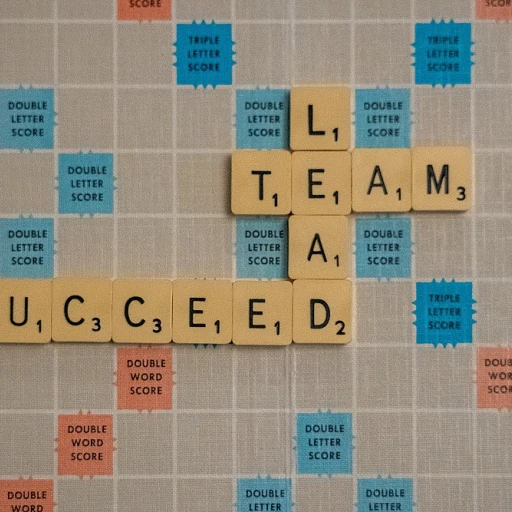
Understanding the 'Crawl, Walk, Run' Methodology
Setting the Stage for Progressive Development
The 'Crawl, Walk, Run' methodology is a strategic framework that offers a structured approach to implementing change and improvement within an organization. Understanding this methodology is crucial for businesses aiming to bolster their human resources capabilities and customer success strategies over time. At its core, this approach focuses on gradual progression, ensuring that foundational skills and systems are firmly established before moving on to more complex tasks. The process begins with the "crawl" phase, which emphasizes building a solid foundation through essential skills and thorough data analysis. This phase is critical in setting up robust analytics and project management platforms, ensuring that any subsequent phases are well-supported by reliable data. Organizations are encouraged to spend time in this initial phase to thoroughly understand their current capabilities and infrastructure. As organizations move to the "walk" phase, they develop intermediate strategies that rely on the groundwork laid during the "crawl." This phase involves refining techniques and incorporating strategies such as digital marketing and advanced training to enhance skills within the company. The goal here is to gradually integrate more complex problem-solving methods while maintaining a focus on the long-term vision. Finally, the "run" phase represents achieving a level of strategic excellence where the organization operates with a high degree of agility and effectiveness. At this stage, organizations can quickly adapt to market changes, demonstrate superior product management, and achieve high levels of customer satisfaction. Implementing the 'Crawl, Walk, Run' strategy isn’t without its challenges, as organizations will face obstacles in each phase. However, by adhering to best practices and learning lessons from previous experiences, companies can smoothly transition through each stage and achieve sustained growth and success. For further insight into the methodology and its application in various business scenarios, it's beneficial to understand roles within the business development process. This knowledge complements the 'Crawl, Walk, Run' approach by providing a clearer picture of how different roles contribute to strategic execution.Crawl Phase: Building a Solid Foundation
Establishing a Firm Foundation: Training and Preparation
In the initial crawl phase, businesses focus on establishing a solid foundation necessary for strategic growth. This stage heavily emphasizes training, learning, and familiarizing the team with essential tools and processes. Establishing this groundwork is crucial, as a well-prepared team translates directly into future success.
A fundamental component of this phase is investing in the right training programs that align with the business's goals. Training should cover both hard and soft skills, such as data analytics and effective communication. By doing so, businesses can ensure that their teams are equipped to handle more complex tasks as they advance to subsequent phases.
Furthermore, businesses must spend time delving into their data and analytics to identify any potential challenges or opportunities. Understanding the dynamics of VSP marketing expenditure can also provide valuable insights during this stage, helping organizations to craft a more tailored approach to their objectives.
The key to this phase lies in creating a business environment that prioritizes problem-solving and encourages input from every team member. Leadership should promote an understanding of the customer's needs and preferences to aid in shaping effective strategies. Moreover, establishing a privacy policy framework early on ensures that ethical standards are upheld as the business progresses.
Through careful preparation and investment in core development, the crawl phase sets the strategic foundation needed to transition smoothly into the more dynamic walk phase and beyond. For more insights into the specific roles and responsibilities at this stage, exploring understanding the roles BDR vs AE can be particularly beneficial in laying the groundwork.
Walk Phase: Developing Intermediate Strategies
Walking Towards Strategic Development
The walk phase in the 'Crawl, Walk, Run' approach marks a significant progression from foundational strategies to more intermediate and impactful ones. It's a period where the focus shifts from basic learning to developing and refining strategies that will help navigate the complexities of the modern business landscape. Organizations often spend time during this phase enhancing their training methods and incorporating data analytics to inform their decisions. Analytics play a crucial role in understanding customer behavior and optimizing marketing efforts, which is essential for achieving long-term success. With the right data, the transition from the crawl phase to walking involves taking more calculated risks and expanding projects to include more complex tasks. Project management becomes vital as businesses learn to manage resources efficiently while retaining the agility to adapt to emerging trends and needs. A significant component of the walk phase is the incorporation of digital marketing strategies. Companies should focus on optimizing their digital marketing efforts to engage and retain customers effectively. This might involve marketing automation or more personalized customer outreach programs. It's essential in this phase to focus on the development of skills necessary for managing increased business complexity. Training programs should be expanded to include soft skills such as problem solving and leadership. Understanding that you can improve your approach here by looking at past marketing campaigns is crucial. These lessons learned can inform future strategies, enhance decision-making capabilities, and ultimately lead to a more effective walk approach. To better grasp developing strategic excellence, consider how training methodologies evolve by exploring the role of a SEM consultant in search engine marketing. This can offer practical insights into refining the walk strategy and preparing for a successful transition into running strategies.Run Phase: Achieving Strategic Excellence
Taking Strategic Steps Forward
The transition from the crawl phase to the walk phase signifies a significant evolution in a company's strategy. During this stage, businesses focus on training their team to develop intermediate strategies that align with long-term goals. This involves the adoption of more sophisticated approaches, such as integrating data analytics into business operations and enhancing digital marketing efforts. By spending time in this phase, organizations can efficiently prepare for the more complex tasks that lie ahead.
Developing a walk strategy is crucial as it allows firms to refine their skills in areas like project management and problem solving. By leveraging data from the crawl phase, teams can make informed decisions that cater to the needs of their customers, ensuring that the strategies adopted will help in achieving commercial success. Additionally, focusing on intermediate steps means businesses can start to explore new marketing channels and products, facilitated by the insights gleaned from data analytics. This will aid in enhancing the company's customer engagement and market reach.
In the walk phase, businesses are encouraged to read and understand the lessons learned from their initial efforts. By analyzing both successes and setbacks with robust analytics, leadership can pinpoint best practices and update their privacy policy to reflect changes in technological applications. Consequently, this phase becomes not only about progression but also about refining the approach to ensure a seamless transition into the final stage of running.
Challenges and Solutions in the 'Crawl, Walk, Run' Approach
Overcoming the Hurdles in Each Phase
Embracing the 'Crawl, Walk, Run' approach isn't without its challenges. Each phase comes with its own set of obstacles, requiring a strategic mindset and adaptive solutions to ensure progress and success in a business landscape. By understanding these challenges, organizations can better prepare to navigate them effectively.
Addressing Crawl Phase Challenges
During the crawl phase, establishing a solid foundation might seem straightforward, but it often involves managing complex tasks such as project management and data analytics. Gathering data and understanding customer needs requires time and careful analysis. Strategies such as detailed training programs and robust marketing initiatives can enhance foundational skills. Remember, spending time to establish a strong base will pay off in the long term.
Navigating the Walk Phase Complexities
The walk phase is where businesses start developing intermediate strategies, and some may find aligning these strategies with business goals challenging. Balancing data-driven insights with strategic execution requires refined problem-solving skills. Investing in digital marketing and ongoing training can help cement this alignment. Tailoring content and practices to address evolving customer needs will facilitate a successful transition from walking to running.
Conquering the Run Phase Hurdles
Achieving strategic excellence in the run phase demands consistent optimization and innovation. Organizations often grapple with maintaining momentum and scaling initiatives. Advanced analytics and a focus on continuous learning help overcome these barriers. Fostering a culture of innovation and agility within teams will help in addressing any unforeseen disruptions.
Best Practices and Lessons for Success
The value of learning from past experiences cannot be overstated. By reflecting on best practices and lessons learned, businesses can be better equipped to handle future challenges. Understanding the importance of privacy policy regulations and adhering to ethical marketing practices ensures trust and credibility with customers, facilitating smoother transitions across the phases.
In summary, tackling challenges in each phase with strategic foresight will lead organizations toward mastering the crawl, walk, run approach, ultimately achieving greater business success.
Case Studies: Successful Implementation of the 'Crawl, Walk, Run' Strategy
Real-World Examples of the 'Crawl, Walk, Run' Strategy
In the realm of CHRO strategy, the 'Crawl, Walk, Run' approach has been effectively implemented by various organizations, leading to remarkable transformations. Let's explore some noteworthy examples that demonstrate how this strategy can lead to success.
Technology Company: From Foundation to Innovation
A leading tech company in the United States embraced the 'Crawl, Walk, Run' methodology to enhance its HR operations. During the crawl phase, the company focused on building a solid foundation by investing in training programs and data analytics. This initial stage was crucial for understanding their workforce's needs and aligning them with business goals.
As they transitioned to the walk phase, the company developed intermediate strategies, such as implementing a digital marketing campaign to attract top talent. This phase involved leveraging data to tailor their approach, ensuring they met both short-term and long-term objectives.
Finally, in the run phase, the company achieved strategic excellence by integrating complex tasks like advanced project management and problem-solving into their HR practices. This holistic approach not only improved employee satisfaction but also boosted overall business success.
Retail Giant: Enhancing Customer Experience
Another compelling case is that of a retail giant that utilized the 'Crawl, Walk, Run' strategy to enhance its customer experience. Initially, the company spent time in the crawl phase to understand customer needs through data analytics and feedback collection. This helped them build a strong foundation for their customer-centric initiatives.
In the walk phase, they developed intermediate strategies by launching targeted marketing campaigns and improving product offerings based on customer insights. This phase was pivotal in establishing a more personalized shopping experience.
By the run phase, the company had achieved a seamless integration of analytics and customer feedback into their operations, leading to a significant increase in customer satisfaction and loyalty.
Lessons Learned and Best Practices
These case studies highlight several best practices and lessons learned from implementing the 'Crawl, Walk, Run' strategy:
- Investing in foundational skills and data analytics during the crawl phase is essential for long-term success.
- Developing intermediate strategies in the walk phase helps bridge the gap between foundational learning and advanced execution.
- Achieving excellence in the run phase requires continuous adaptation and integration of customer feedback and analytics.
By understanding and applying these principles, businesses can effectively navigate the complexities of the 'Crawl, Walk, Run' approach, ultimately leading to strategic success.













